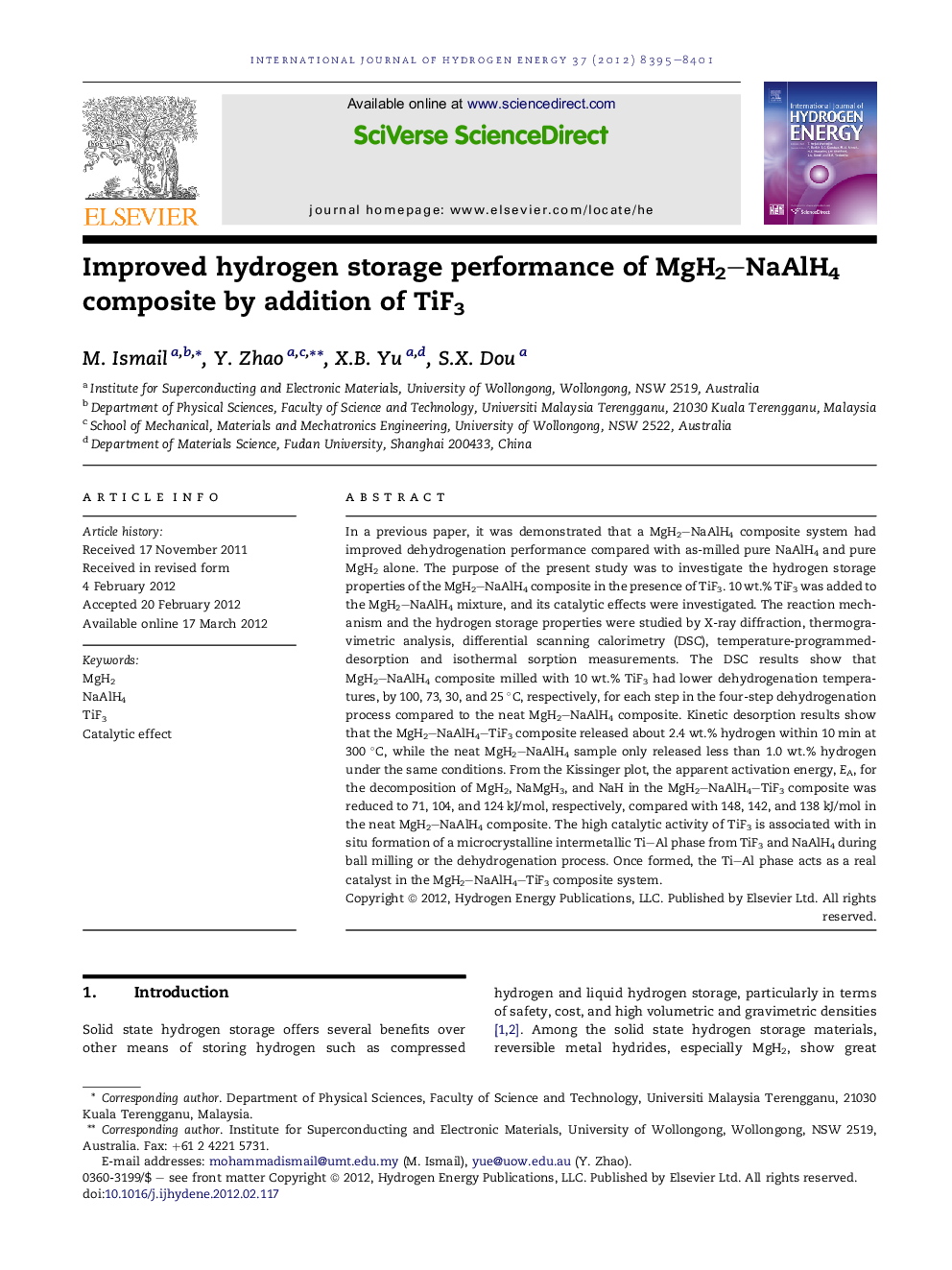| Article ID | Journal | Published Year | Pages | File Type |
|---|---|---|---|---|
| 1275340 | International Journal of Hydrogen Energy | 2012 | 7 Pages |
In a previous paper, it was demonstrated that a MgH2–NaAlH4 composite system had improved dehydrogenation performance compared with as-milled pure NaAlH4 and pure MgH2 alone. The purpose of the present study was to investigate the hydrogen storage properties of the MgH2–NaAlH4 composite in the presence of TiF3. 10 wt.% TiF3 was added to the MgH2–NaAlH4 mixture, and its catalytic effects were investigated. The reaction mechanism and the hydrogen storage properties were studied by X-ray diffraction, thermogravimetric analysis, differential scanning calorimetry (DSC), temperature-programmed-desorption and isothermal sorption measurements. The DSC results show that MgH2–NaAlH4 composite milled with 10 wt.% TiF3 had lower dehydrogenation temperatures, by 100, 73, 30, and 25 °C, respectively, for each step in the four-step dehydrogenation process compared to the neat MgH2–NaAlH4 composite. Kinetic desorption results show that the MgH2–NaAlH4–TiF3 composite released about 2.4 wt.% hydrogen within 10 min at 300 °C, while the neat MgH2–NaAlH4 sample only released less than 1.0 wt.% hydrogen under the same conditions. From the Kissinger plot, the apparent activation energy, EA, for the decomposition of MgH2, NaMgH3, and NaH in the MgH2–NaAlH4–TiF3 composite was reduced to 71, 104, and 124 kJ/mol, respectively, compared with 148, 142, and 138 kJ/mol in the neat MgH2–NaAlH4 composite. The high catalytic activity of TiF3 is associated with in situ formation of a microcrystalline intermetallic Ti–Al phase from TiF3 and NaAlH4 during ball milling or the dehydrogenation process. Once formed, the Ti–Al phase acts as a real catalyst in the MgH2–NaAlH4–TiF3 composite system.
► We investigate the hydrogen storage properties of the MgH2–NaAlH4–TiF3 composite. ► The catalytic effect were analyzed by PCT, DSC, and XRD. ► The dehydrogenation temperatures had lowered by 100, 73, 30, and 25 °C, respectively. ► Ti and F-containing species may promote the interaction of NaAlH4 and MgH2.
